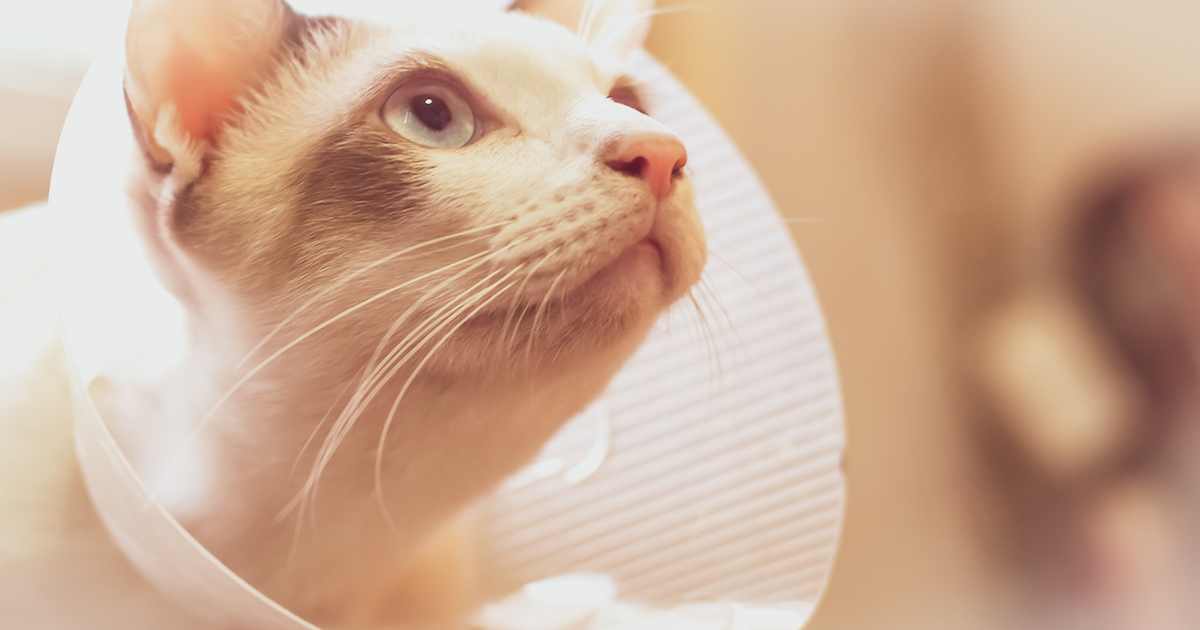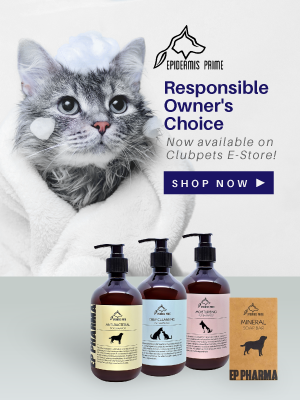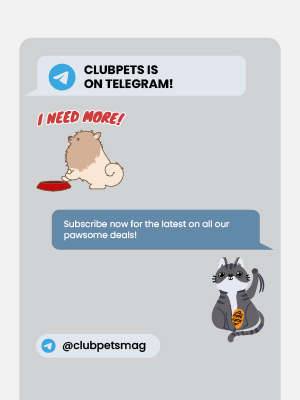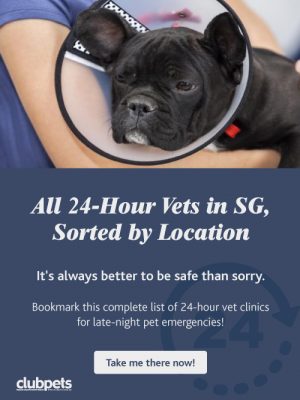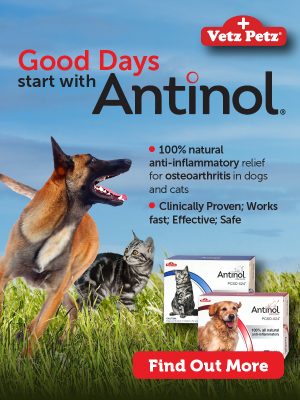There are many different reasons why a cat or dog may require surgery. Whether it’s an elective surgery or a medical emergency, it will always feel extremely nerve-wracking for a pet parent even after the surgery is completed due to its accompanying risks.
This is completely understandable, as cats and dogs are no different from people in their responses to the effects of surgery and anaesthesia. Their healing process is the same as ours, and with post-surgery care, you can shorten their healing time.
Read on to find out what are the 9 post-surgery care rules you must observe for your furkid!
Note: For routine procedures such as sterilisation, the pet will be fit to go home on the same day. For some surgical procedures, however, hospitalisation in the immediate postoperative period is advisable to monitor for postoperative complications or for fluid therapy. In such cases, you should always go with your vet’s care recommendation and visit your pet in the hospital as often as possible to reduce its anxiety and fear of abandonment.
1. Monitor your pet closely for the first 24 hours after surgery
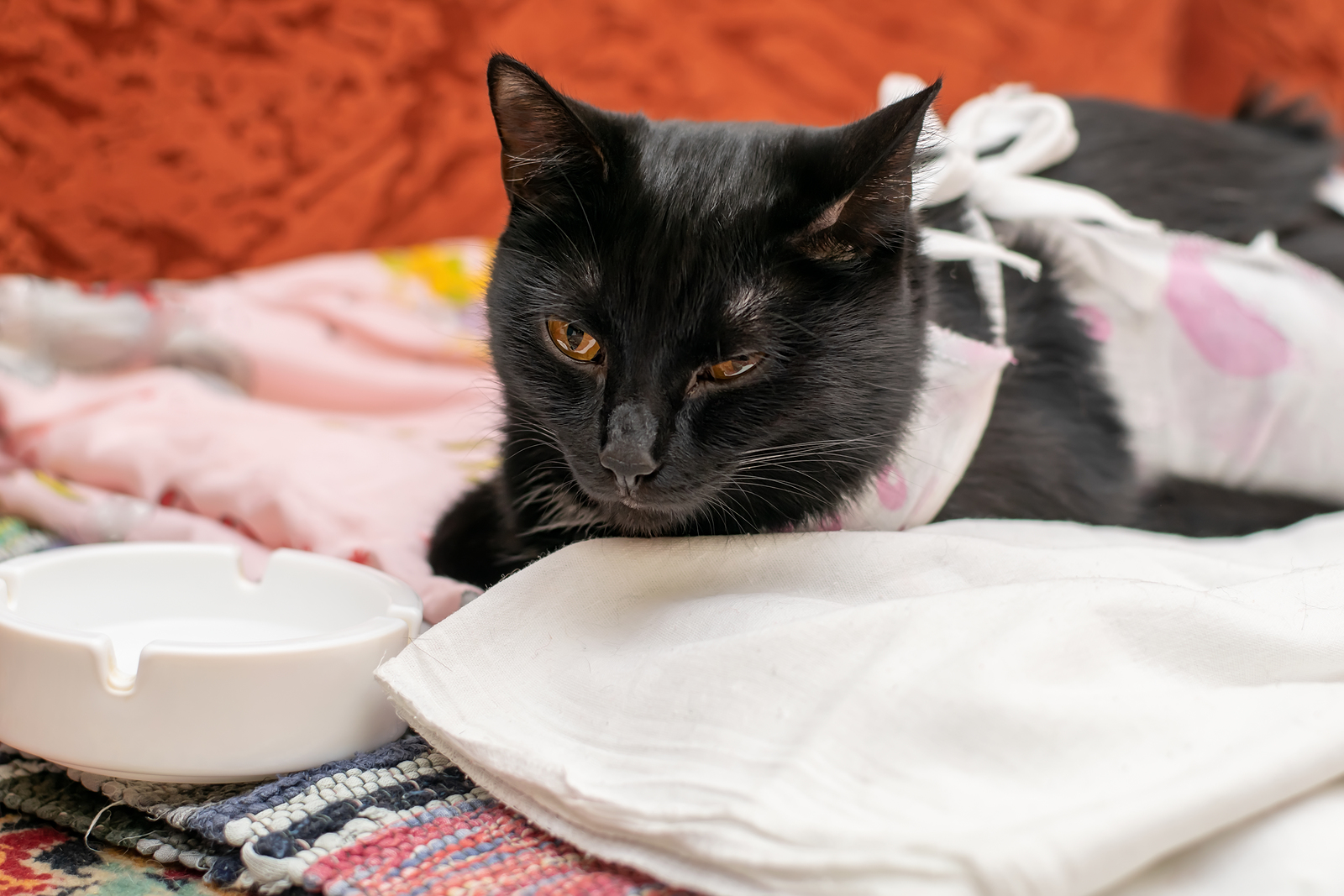
It’s always important to keep a close watch on your pet for the first 24 hours after its surgery if it’s allowed to go home on the same day. Your pet may be under the effects of the surgery and anaesthesia for a while, but it should be back to its usual self by the next morning.
Provide a quiet place with soft, clean bedding for it to rest comfortably at, and withhold water and food until it has regained full consciousness. The initial meals and drinks after that should be controlled and in small quantities, and you should continue to monitor your pet for any signs of abnormal recovery from anaesthesia and/or the surgery, which includes:
- Bleeding from the surgical wound
- Increased or decreased body temperature (cool or warm to the touch)
- Shivering
- Reluctance to move due to pain
- Unsteady gait
- Pale gums
- Laboured breathing
- Vomiting
- Diarrhoea
- Lethargy, drowsiness, depression, or weakness
- Loss of appetite/decreased water intake (Do not force your pet to eat or drink when it may still be nauseous due to the anaesthetic as this may induce vomiting or cause food or water to wrongly enter the lungs and cause pneumonia!)
If any of these signs occur even after 24 hours, call your vet immediately for medical advice and find out if you need to make a trip back to the clinic!
2. Restrict movement & activity
As much as your pet wants to jump around and play, the side effects of anaesthetic or his or her lethargic body probably won’t allow that to happen. However, in some cases, some stubborn critters will insist on engaging in some sort of physical activity. Even if your pet seems fine, do what you can to restrict its movements and limit its activity, lest the surgical wound reopens.
Clinical studies have shown that it takes 7 days to achieve good healing of surgical wounds, so rest during this period will support the healing process. For major operations such as bone surgeries, your pet may even need to be confined for 3-6 weeks or longer.
To keep your pet from moving, running, or jumping about, consider confining it in a comfortable crate or to a small area in your home where you can keep a watchful eye on it. Ensure that a fresh supply of water is closeby to their beds as well, so that they won’t have to go out of their way just to hydrate themselves. Naturally, no ball-throwing, swimming, or bathing is allowed, and make sure to walk your dog on a leash if it needs to go outdoors to relieve itself.
3. Keep your pet indoors
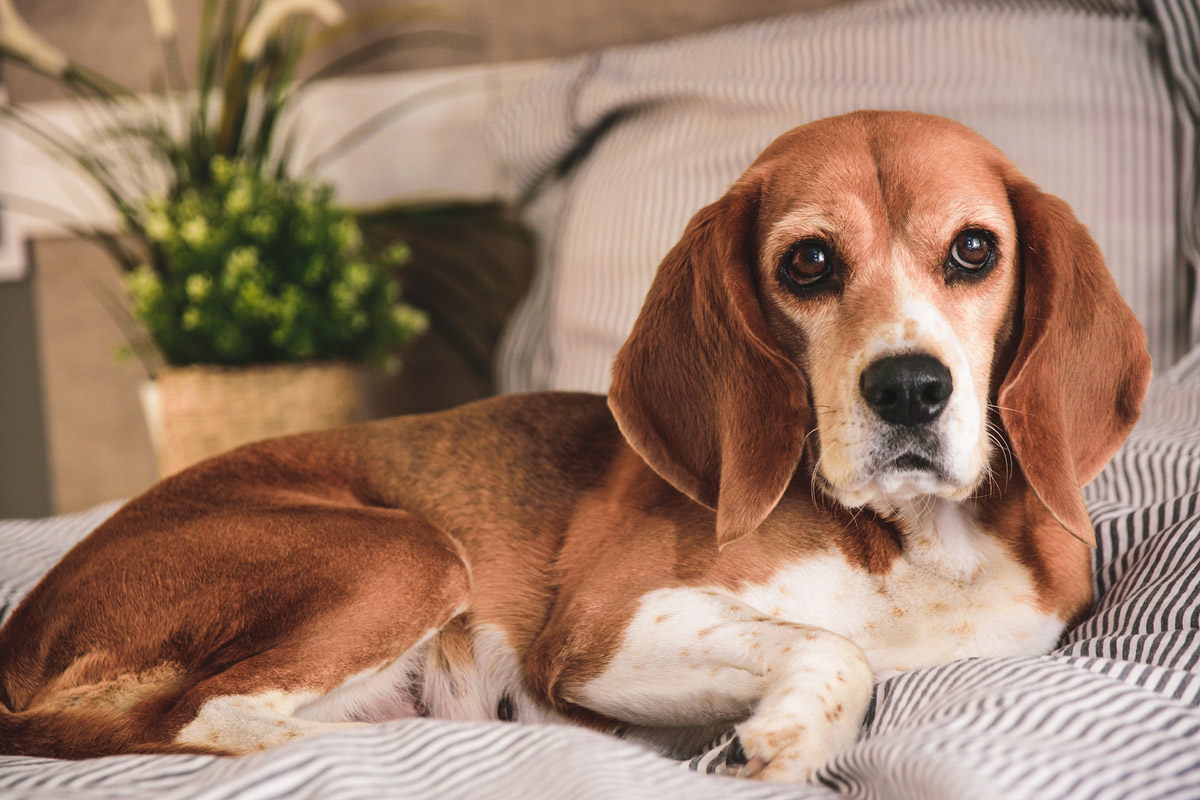
Besides making it easier for you to keep an eye on your pet and prevent your pet from overexerting itself, it’s very important to keep your pet indoors during the 7-day period of rest, restricted movement, and indoor confinement.
This is to ensure good healing during those 7 days, as the wound is protected from contamination and exposure to flies. It will also reduce the chances of inflammation, pain, and complications from the wound and allow you to check the surgical site regularly.
4. Check the wound regularly
Even after the initial 24 hours, it is best to check your pet’s incision site twice a day, once in the morning and once in the evening. There should be minimal redness and swelling, and no discharge at all.
Do not press on the incision and always make sure to sanitise your hands before you gently check the area! If you do happen to feel a firm knot or lump, this is normal and not a cause for alarm. However, do inform your vet immediately if you notice a visible and continued redness, swelling, and if there is discharge from the incision.
5. Protect the wound
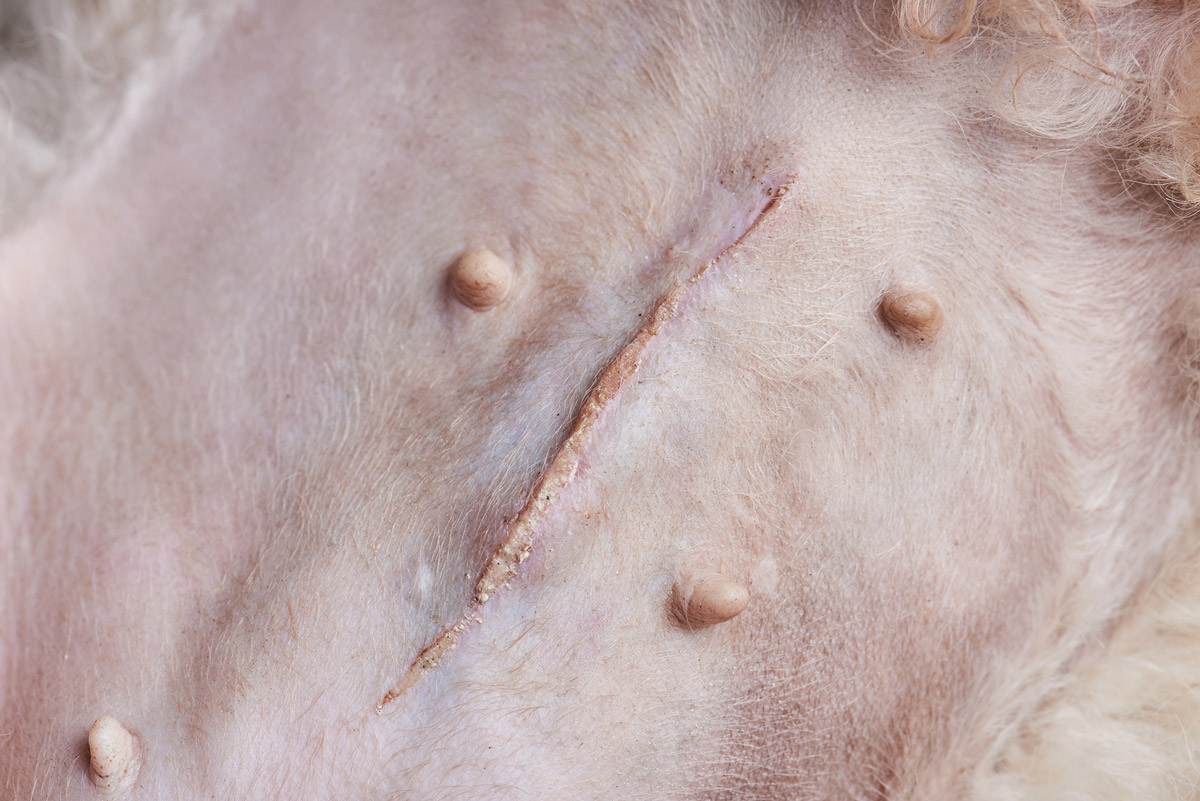
A surgical wound on a dog’s stomach
Once again, this cannot be stressed enough — it’s imperative to prevent the wound from reopening and from getting infected! Besides keeping a watchful eye on your pet and providing it with a quiet, cosy space to rest in, there are other ways that you can protect the wound:
- Use an Elizabethan collar — this prevents your pet from licking or biting at the infection site, which they will definitely be tempted to do so as it heals and itches. Ideally, leave the collar on for all 7 days of rest, especially when your pet is unsupervised ie. when you are asleep at night
- Do not allow other pets in the household to chew or lick the incision either
- Replace your cat’s litter with shredded paper or pelleted paper-based litter — paper is less likely to get caught in its wounds and bandages
- Do not remove the bandage if your pet came home with one on — the bandage serves to protect the wound and take pressure off the area
- Cover the dressing with a plastic bag or cling film if it has to go outdoors to relieve itself — this protects it from wet or damp grass.
6. Dose all prescribed medications
Even if your pet seems like it’s recovering fine, it’s vital that it receives the full course of its prescribed medication or its recovery might be hindered.
If a course of antibiotics is not completed, your pet will not be protected from the risk of infection and may develop antibiotic resistance in the future. Since cats and dogs are no different from humans when it comes to pain, the surgery is also bound to leave your beloved pet feeling sore with varying pain intensity.
Your furkid will instinctively try to hide this fact, so it’s always best to dose it with its pain relief medication though it may show no obvious signs of pain. This applies to pain killing patches that might be bandaged to its body as well — do not attempt to remove it on your own!
Do take note to never dose your pet with human pain medications too. Some human pain medications, including paracetamol and certain NSAIDs, are known to cause toxicities and fatalities in dogs and cats.
7. Provide a nourishing diet
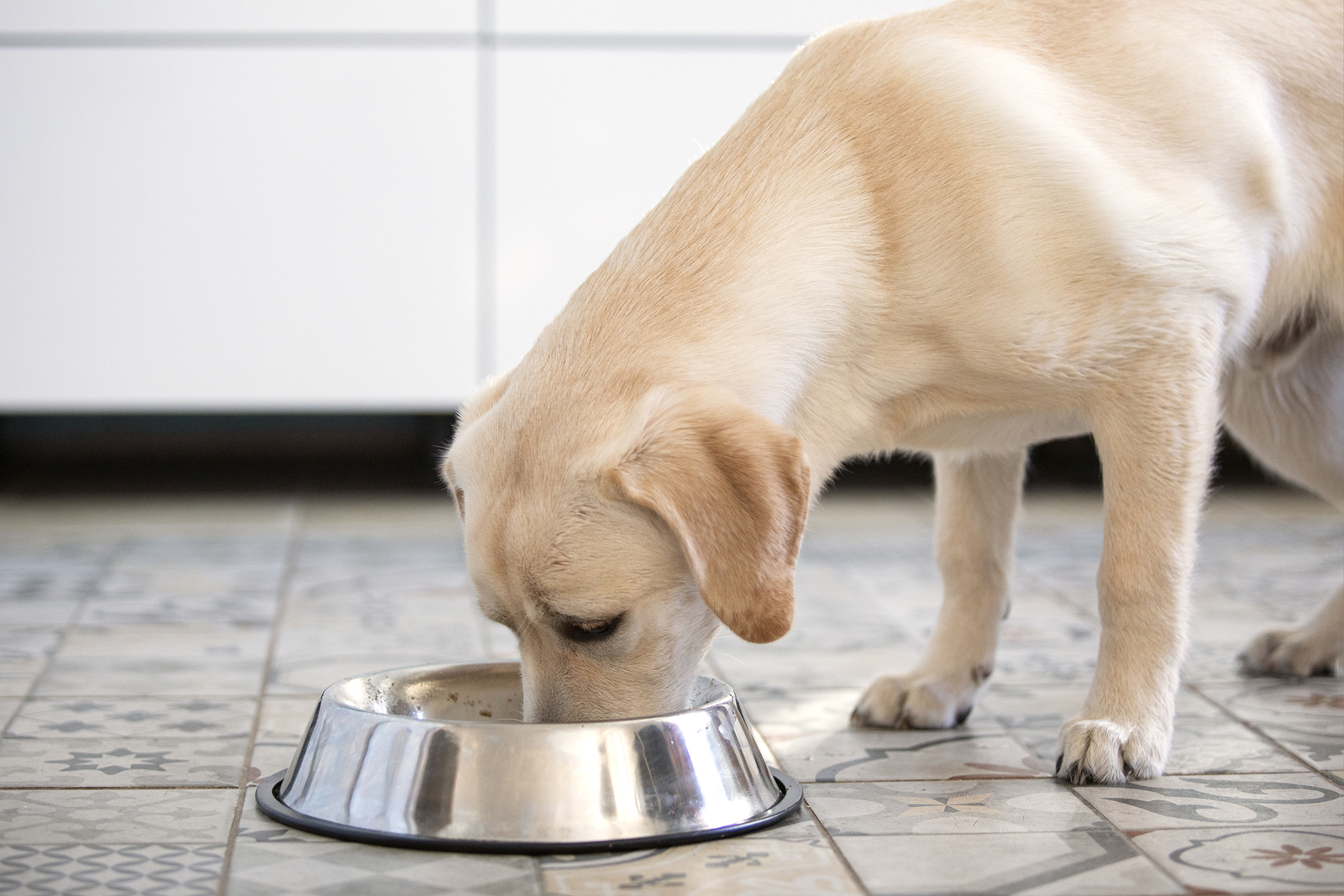
Due to the discomfort post-op, your furkid may refuse to eat. That’s where you come in to help your pet regain its usual appetite! However, don’t force your pet if it doesn’t want to eat on the night it returns home from surgery — this may cause your pet to vomit instead.
What’s most important at the end of the day is to give something nutritious that’s also tasty and easy to digest. Wet food is usually more palatable and appealing as compared to dry pellets, and you can start with small portions before working your way up. Once your pet has successfully regained its appetite, provide food that is high in calories and highly-digestible protein. These are needed for wound repair during its healing phase!
Either increase the amount you serve per meal if you wish to continue feeding your pet its regular food, or look for commercial diets that have been specially formulated for animals that are recovering from illness or surgery. Typically, these “recovery” diets are only available at vet clinics, so do make sure to ask your vet if they carry any if you prefer this option.
Once your pet is completely healed, revert to its pre-surgery diet or you’ll soon have a chubby critter on hand! Overweightness should never be taken lightly (pun intended), because it is a risk factor for several conditions including cardiovascular disease, diabetes, and increases the stress on limb joints, which in turn worsens conditions like osteoarthritis.
Bonus care tip: If your pet underwent sterilisation, the removal of its ovaries or testicles will result in a reduction of your pet’s metabolic rate. As such, you’ll need to reduce its daily food intake by 10-20% two months after the surgery in order to prevent post-sterilisation weight gain.
8. Bath only 10-14 days after surgery
Most of us might give our pets (especially dogs) weekly baths, but if your furry friend has just gotten home from a surgery, please refrain from bathing it for the next 10-14 days! This is because if the wound has yet to heal completely, the water from the bath can make sutures become less tight, which increases the risk of the wound opening up. On top of that, water can carry bacteria and surface contaminants, which may get into the wound and slow down the healing process.
9. Post-surgery review
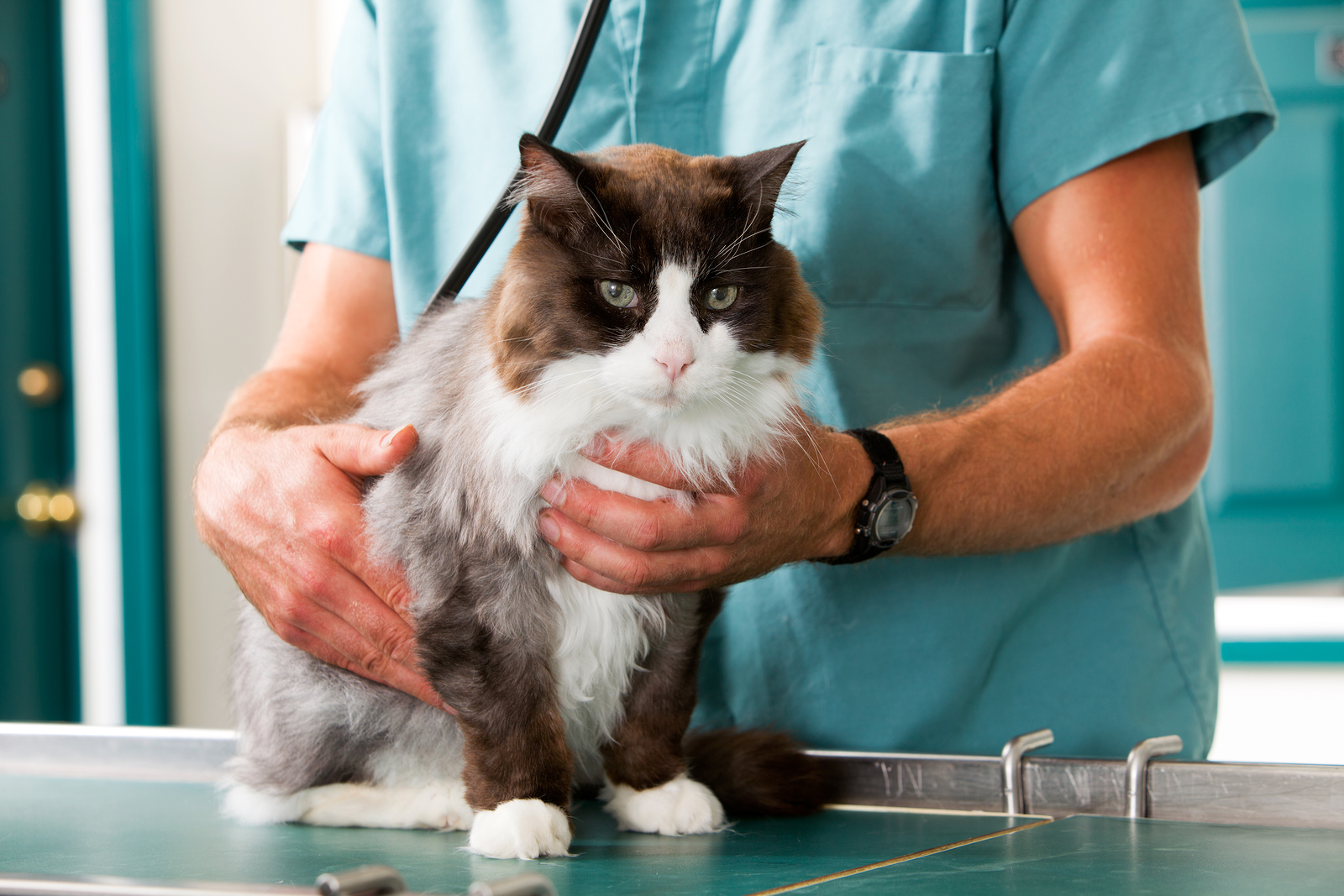
If your vet requests for a follow-up appointment, make sure that you take your pet to the check-up accordingly! These scheduled check-ups after the operation could be for the removal of non-absorbable sutures or a change of dressing, which will have to be done properly and on time so as to not delay the healing of your pet’s wound.
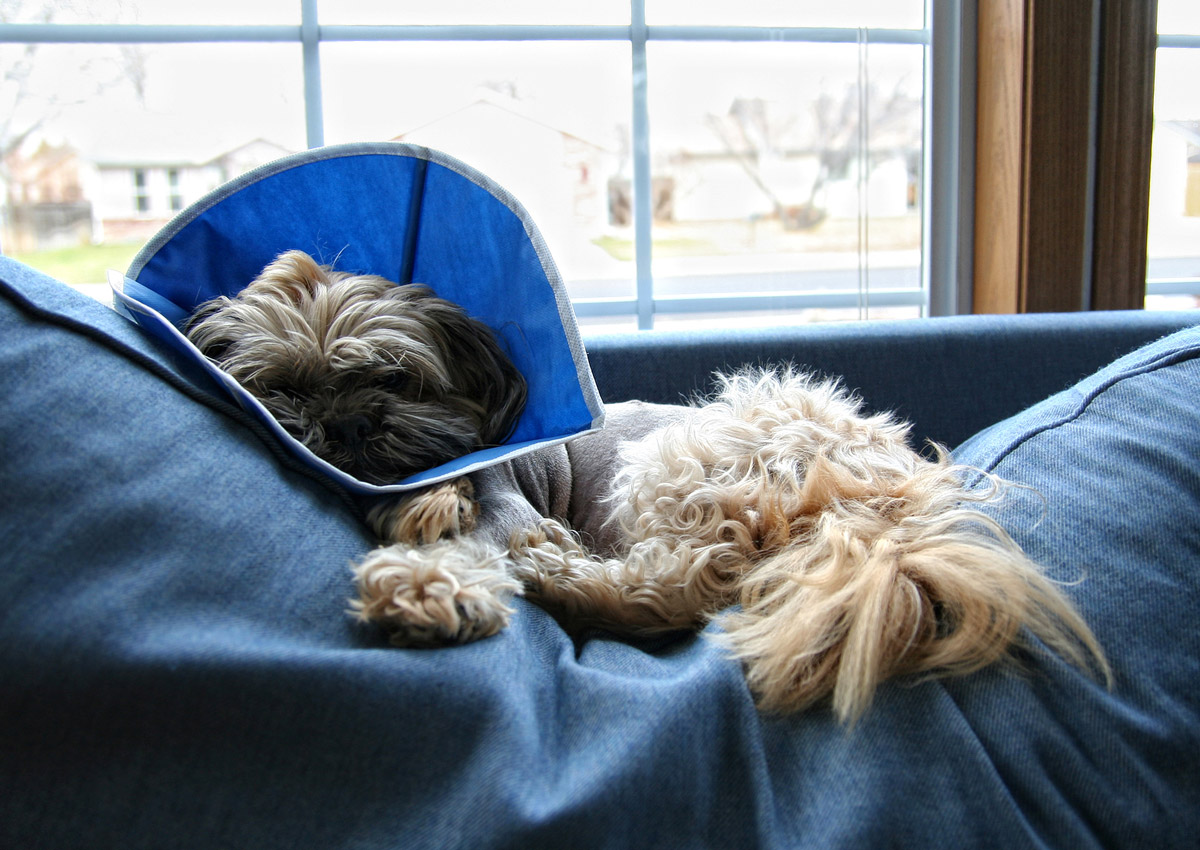
Being fully aware of your pet’s behaviour is important in the aftercare process. Don’t hesitate to contact your local vet if it shows extreme side effects like constant vomiting, diarrhoea, or a prolonged loss in appetite; it’s up to you to make sure your furkid is in the pink of health!
This article was co-written by clubpets and Dr. Lennie from The Animal Clinic.

